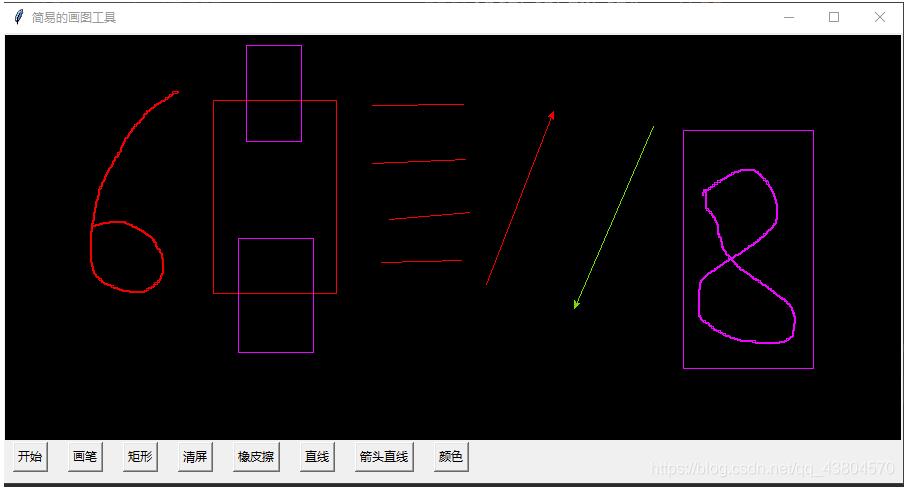淺談Spring與SpringMVC父子容器的關(guān)系與初始化
Spring和SpringMVC的容器具有父子關(guān)系,Spring容器為父容器,SpringMVC為子容器,子容器可以引用父容器中的Bean,而父容器不可以引用子容器中的Bean。
了解了Spring與SpringMVC父子容器的關(guān)系,接下來(lái)讓我們看看Spring與SpringMVC容器的初始化過(guò)程。
以下講解使用的web.xml文件如下:
<context-param> <param-name>contextConfigLocation</param-name>//指定spring ioc配置文件的位置 <param-value>classpath*:spring/*.xml</param-value> </context-param> <!-- Creates the Spring Container shared by all Servlets and Filters --> <listener> <listener-class>org.springframework.web.context.ContextLoaderListener</listener-class> </listener><!-- 配置DisaptcherServlet --> <servlet> <servlet-name>springMVC</servlet-name> <servlet-class>org.springframework.web.servlet.DispatcherServlet</servlet-class> <!-- 初始化參數(shù),配置springmvc配置文件 --> <init-param> <param-name>contextConfigLocation</param-name> <param-value>springMVC配置文件的路徑</param-value> </init-param> <!-- web容器啟動(dòng)時(shí)加載該Servlet --> <load-on-startup>1</load-on-startup> </servlet> <servlet-mapping> <servlet-name>springMVC</servlet-name> <url-pattern>/</url-pattern> </servlet-mapping>
spring ioc容器初始化的過(guò)程
1、web應(yīng)用程序啟動(dòng)時(shí),tomcat會(huì)讀取web.xml文件中的context-parm(含有配置文件的路徑)和listener節(jié)點(diǎn),接著會(huì)為應(yīng)用程序創(chuàng)建一個(gè)ServletContext,為全局共享,Spring ioc容器就是存儲(chǔ)在這里
2、tomcat將context-param節(jié)點(diǎn)轉(zhuǎn)換為鍵值對(duì),寫入到ServletContext中
3、創(chuàng)建listener節(jié)點(diǎn)中的ContextLoaderListener實(shí)例,調(diào)用該實(shí)例,初始化webapplicationContext,這是一個(gè)接口,其實(shí)現(xiàn)類為XmlWebApplicationContext(即spring的IOC容器),其通過(guò)ServletContext.getinitialParameter('contextConfigLoaction')從ServletContext中獲取context-param中的值(即spring ioc容器配置文件的路徑),這就是為什么要有第二步的原因。接著根據(jù)配置文件的路徑加載配置文件信息(其中含有Bean的配置信息)到WebApplicationContext(即spring ioc容器)中,將WebApplicationContext以WebApplicationContext.ROOTWEBAPPLICATIONCONTEXTATTRIBUTE為屬性Key,將其存儲(chǔ)到ServletContext中,便于獲取。至此,spring ioc容器初始化完畢
4、容器初始化web.xml中配置的servlet,為其初始化自己的上下文信息servletContext,并加載其設(shè)置的配置信息到該上下文中。將WebApplicationContext(即spring ioc容器)設(shè)置為它的父容器。其中便有SpringMVC(假設(shè)配置了SpringMVC),這就是為什么spring ioc是springmvc ioc的父容器的原因
SpringMVC初始化過(guò)程
SpringMVC通過(guò)web.xml文件中servlet標(biāo)簽下的DispatcherServlet類完成自身的初始化
DispatcherServlet類的繼承體系如下:

請(qǐng)注意每個(gè)長(zhǎng)方形中第三行的方法,其為完成SpringMVC ioc容器初始化的關(guān)鍵。
我們知道,每個(gè)servlet在初始化時(shí),會(huì)先調(diào)用servlte的構(gòu)造函數(shù)(為默認(rèn)構(gòu)造函數(shù)),接著調(diào)用init函數(shù),而DispatcherServlet的init方法在其父類HttpServlet中。
HttpServlet中的init方法
/DispatcherServlet第一次加載時(shí)調(diào)用init方法@Override public final void init() throws ServletException { if (logger.isDebugEnabled()) { logger.debug('Initializing servlet ’' + getServletName() + '’'); } // Set bean properties from init parameters. try {/*加載web.xml文件中的servlet標(biāo)簽中的init-param,其中含有springMVC的配置文件的名字和路徑 *若沒(méi)有,則默認(rèn)為(servlet-name)-servlet.xml, *默認(rèn)路徑為WEF—INF下 */ PropertyValues pvs = new ServletConfigPropertyValues(getServletConfig(), this.requiredProperties); //創(chuàng)建BeanWrapper實(shí)例,為DispatcherServlet設(shè)置屬性 BeanWrapper bw = PropertyAccessorFactory.forBeanPropertyAccess(this); ResourceLoader resourceLoader = new ServletContextResourceLoader(getServletContext()); bw.registerCustomEditor(Resource.class, new ResourceEditor(resourceLoader, getEnvironment())); initBeanWrapper(bw); //把init-param中的參數(shù)設(shè)置到DispatcherServlet里面去 bw.setPropertyValues(pvs, true); } catch (BeansException ex) { logger.error('Failed to set bean properties on servlet ’' + getServletName() + '’', ex); throw ex; } // Let subclasses do whatever initialization they like. //該方法在FrameworkServlet中 initServletBean(); if (logger.isDebugEnabled()) { logger.debug('Servlet ’' + getServletName() + '’ configured successfully'); } }
FrameworkServlet中的initServletBean方法
@Override protected final void initServletBean() throws ServletException { getServletContext().log('Initializing Spring FrameworkServlet ’' + getServletName() + '’'); if (this.logger.isInfoEnabled()) { this.logger.info('FrameworkServlet ’' + getServletName() + '’: initialization started'); } long startTime = System.currentTimeMillis(); try { //創(chuàng)建springmvc的ioc容器實(shí)例 this.webApplicationContext = initWebApplicationContext(); initFrameworkServlet(); } catch (ServletException ex) { this.logger.error('Context initialization failed', ex); throw ex; } catch (RuntimeException ex) { this.logger.error('Context initialization failed', ex); throw ex; } if (this.logger.isInfoEnabled()) { long elapsedTime = System.currentTimeMillis() - startTime; this.logger.info('FrameworkServlet ’' + getServletName() + '’: initialization completed in ' + elapsedTime + ' ms'); } }
FrameworkServlet中的initWebapplicationContext方法
protected WebApplicationContext initWebApplicationContext() { //首先通過(guò)ServletContext獲得spring容器,因?yàn)樽尤萜鱯pringMVC要和父容器spring容器進(jìn)行關(guān)聯(lián) //這就是為什么要在ServletContext中注冊(cè)spring ioc容器的原因 WebApplicationContext rootContext =WebApplicationContextUtils.getWebApplicationContext(getServletContext()); //定義springMVC容器wac WebApplicationContext wac = null; //判斷容器是否由編程式傳入(即是否已經(jīng)存在了容器實(shí)例),存在的話直接賦值給wac,給springMVC容器設(shè)置父容器 //最后調(diào)用刷新函數(shù)configureAndRefreshWebApplicationContext(wac),作用是把springMVC的配置信息加載到容器中去(之前已經(jīng)將配置信息的路徑設(shè)置到了bw中) if (this.webApplicationContext != null) { // A context instance was injected at construction time -> use it wac = this.webApplicationContext; if (wac instanceof ConfigurableWebApplicationContext) {ConfigurableWebApplicationContext cwac = (ConfigurableWebApplicationContext) wac;if (!cwac.isActive()) { if (cwac.getParent() == null) { // The context instance was injected without an explicit parent -> set // the root application context (if any; may be null) as the parent //將spring ioc設(shè)置為springMVC ioc的父容器 cwac.setParent(rootContext); } configureAndRefreshWebApplicationContext(cwac);} } } if (wac == null) { // 在ServletContext中尋找是否有springMVC容器,初次運(yùn)行是沒(méi)有的,springMVC初始化完畢ServletContext就有了springMVC容器 wac = findWebApplicationContext(); } //當(dāng)wac既沒(méi)有沒(méi)被編程式注冊(cè)到容器中的,也沒(méi)在ServletContext找得到,此時(shí)就要新建一個(gè)springMVC容器 if (wac == null) { // 創(chuàng)建springMVC容器 wac = createWebApplicationContext(rootContext); } if (!this.refreshEventReceived) { //到這里mvc的容器已經(jīng)創(chuàng)建完畢,接著才是真正調(diào)用DispatcherServlet的初始化方法onRefresh(wac) onRefresh(wac); } if (this.publishContext) { //將springMVC容器存放到ServletContext中去,方便下次取出來(lái) String attrName = getServletContextAttributeName(); getServletContext().setAttribute(attrName, wac); if (this.logger.isDebugEnabled()) {this.logger.debug('Published WebApplicationContext of servlet ’' + getServletName() + '’ as ServletContext attribute with name [' + attrName + ']'); } } return wac; }
FrameworkServlet中的createWebApplicationContext(WebApplicationContext parent)方法
protected WebApplicationContext createWebApplicationContext(ApplicationContext parent) { Class<?> contextClass = getContextClass(); if (this.logger.isDebugEnabled()) { this.logger.debug('Servlet with name ’' + getServletName() + '’ will try to create custom WebApplicationContext context of class ’' + contextClass.getName() + '’' + ', using parent context [' + parent + ']'); } if (!ConfigurableWebApplicationContext.class.isAssignableFrom(contextClass)) { throw new ApplicationContextException( 'Fatal initialization error in servlet with name ’' + getServletName() + '’: custom WebApplicationContext class [' + contextClass.getName() + '] is not of type ConfigurableWebApplicationContext'); } //實(shí)例化空白的ioc容器 ConfigurableWebApplicationContext wac =(ConfigurableWebApplicationContext) BeanUtils.instantiateClass(contextClass); //給容器設(shè)置環(huán)境 wac.setEnvironment(getEnvironment()); //給容器設(shè)置父容器(就是spring容器),兩個(gè)ioc容器關(guān)聯(lián)在一起了 wac.setParent(parent); //給容器加載springMVC的配置信息,之前已經(jīng)通過(guò)bw將配置文件路徑寫入到了DispatcherServlet中 wac.setConfigLocation(getContextConfigLocation()); //上面提到過(guò)這方法,刷新容器,根據(jù)springMVC配置文件完成初始化操作,此時(shí)springMVC容器創(chuàng)建完成 configureAndRefreshWebApplicationContext(wac); return wac; }
DispatcherServlet的onRefresh(ApplicationContext context)方法
@Override protected void onRefresh(ApplicationContext context) { initStrategies(context); }
DispatcherServlet的initStrategies(ApplicationContext context)方法
protected void initStrategies(ApplicationContext context) { initMultipartResolver(context);//文件上傳解析 initLocaleResolver(context);//本地解析 initThemeResolver(context);//主題解析 initHandlerMappings(context);//url請(qǐng)求映射 initHandlerAdapters(context);//初始化真正調(diào)用controloler方法的類 initHandlerExceptionResolvers(context);//異常解析 initRequestToViewNameTranslator(context); initViewResolvers(context);//視圖解析 initFlashMapManager(context); }
總結(jié)以下DispatcherServlet及各個(gè)父類(接口)的功能:
HttpServlet:實(shí)現(xiàn)了init方法,完成web,xml中與DispatcherServlet有關(guān)的參數(shù)的讀入,初始化DispatcherServlet。
FrameworkServlet:完成了springMVC ioc 容器的創(chuàng)建,并且將spring ioc容器設(shè)置為springMVC ioc容器的父容器,將springMVC ioc容器注冊(cè)到ServletContext中
DispatcherServlet:完成策略組件的初始化
至此,SpringMVC容器初始化完成
以上這篇淺談Spring與SpringMVC父子容器的關(guān)系與初始化就是小編分享給大家的全部?jī)?nèi)容了,希望能給大家一個(gè)參考,也希望大家多多支持好吧啦網(wǎng)。
相關(guān)文章:
1. ASP刪除img標(biāo)簽的style屬性只保留src的正則函數(shù)2. 使用css實(shí)現(xiàn)全兼容tooltip提示框3. 一文帶你搞懂JavaScript中的進(jìn)制與進(jìn)制轉(zhuǎn)換4. 得到XML文檔大小的方法5. 詳解JS前端使用迭代器和生成器原理及示例6. javascript xml xsl取值及數(shù)據(jù)修改第1/2頁(yè)7. 詳解CSS偽元素的妙用單標(biāo)簽之美8. ASP編碼必備的8條原則9. 匹配模式 - XSL教程 - 410. 怎樣才能用js生成xmldom對(duì)象,并且在firefox中也實(shí)現(xiàn)xml數(shù)據(jù)島?

 網(wǎng)公網(wǎng)安備
網(wǎng)公網(wǎng)安備